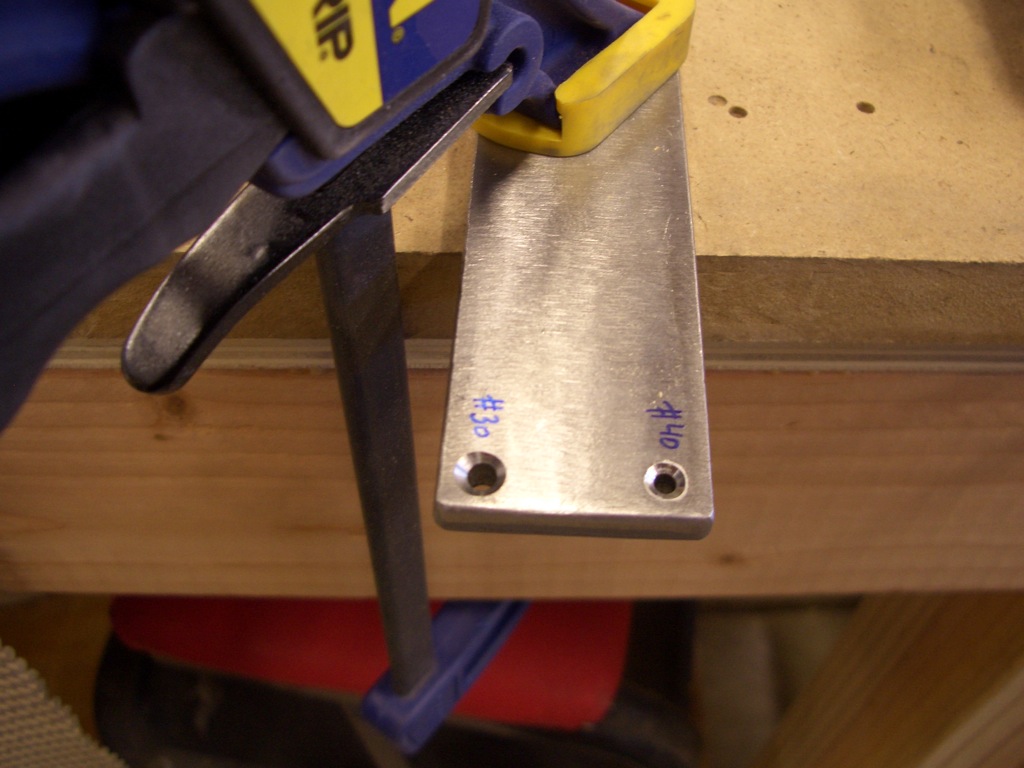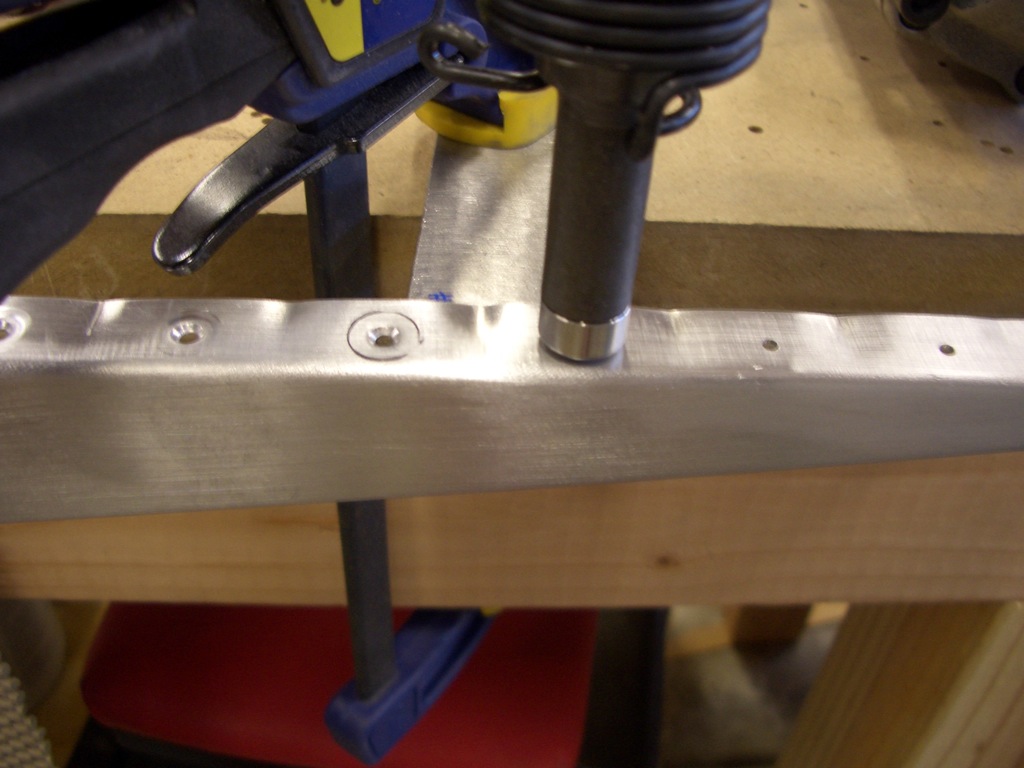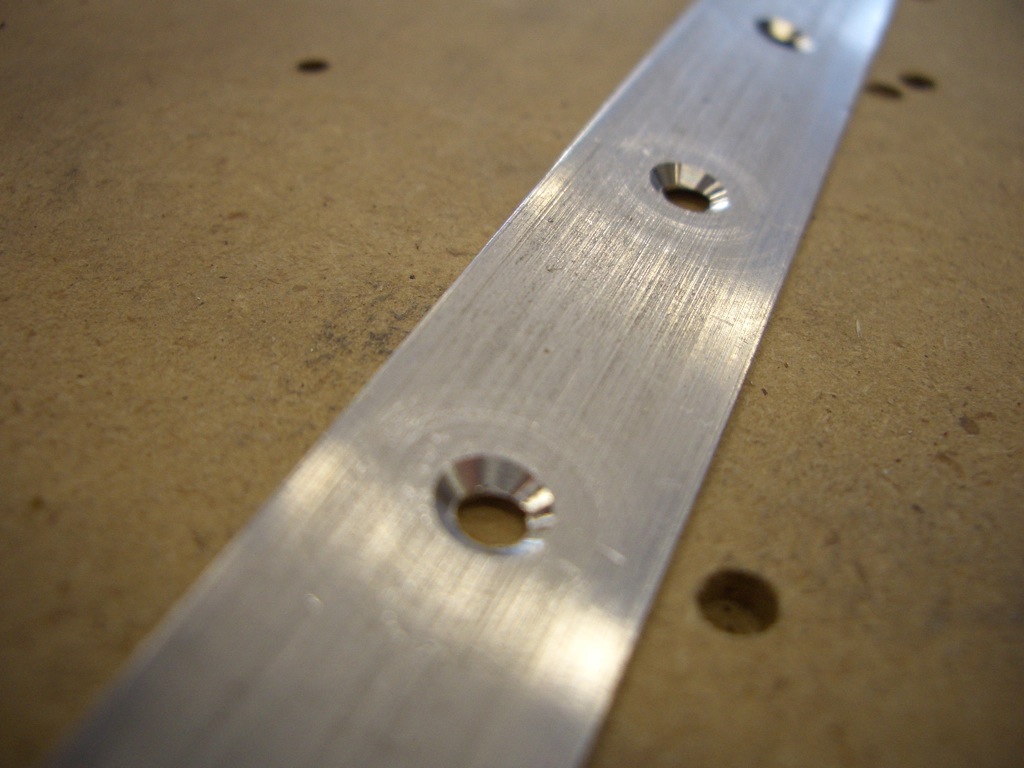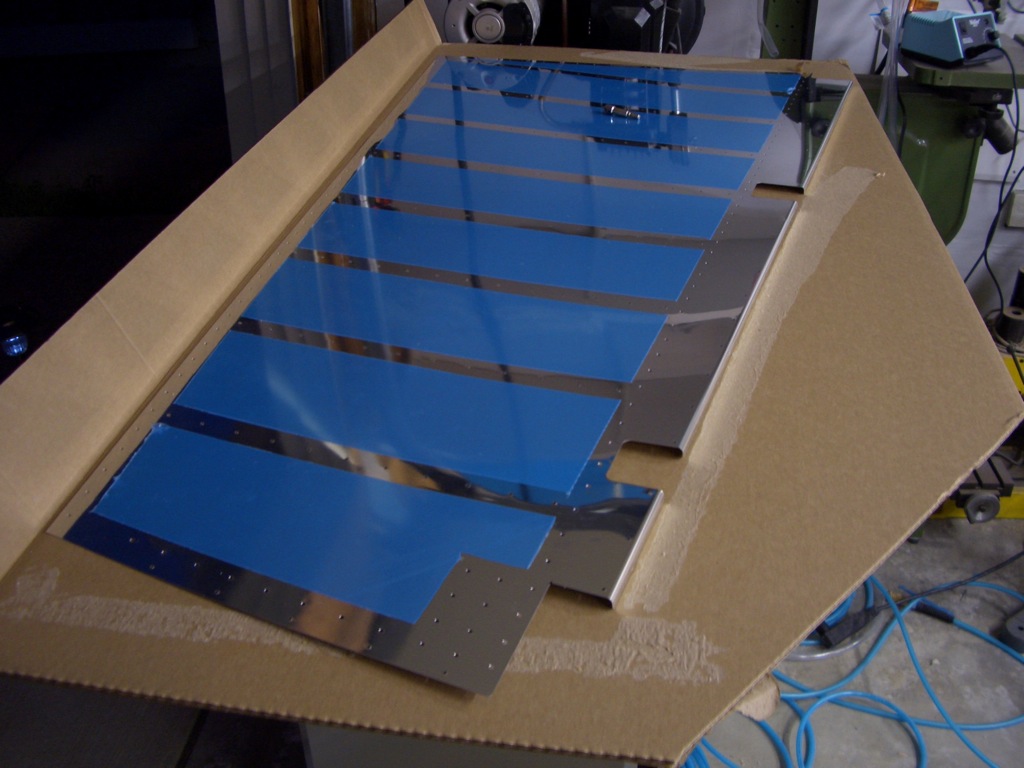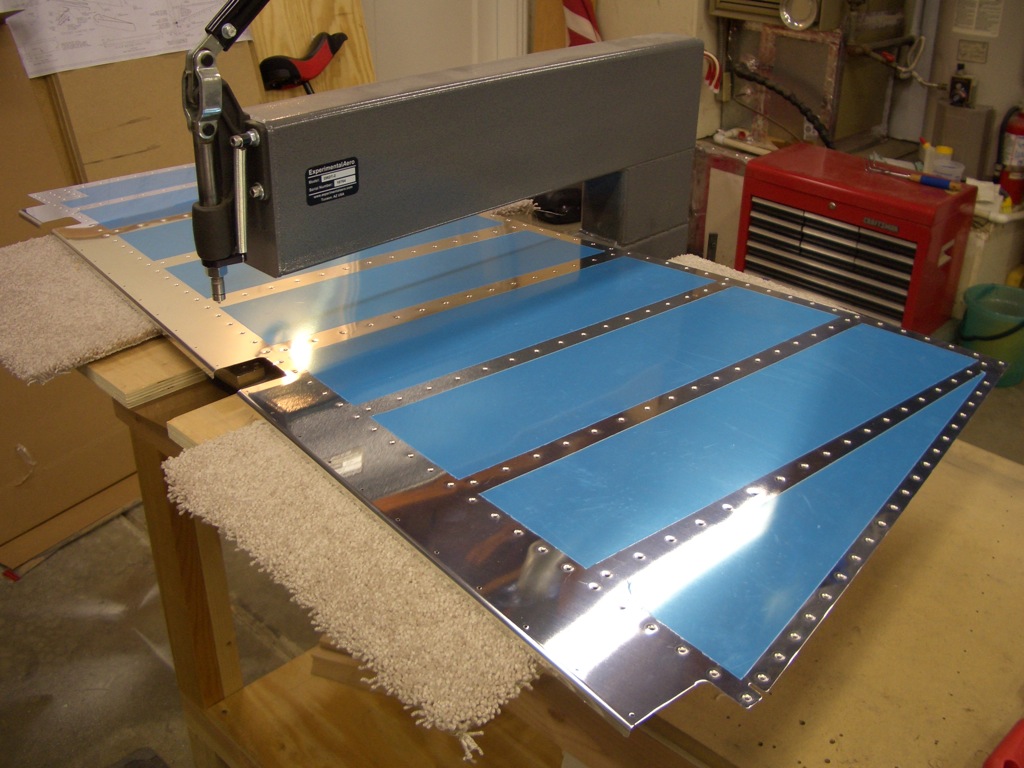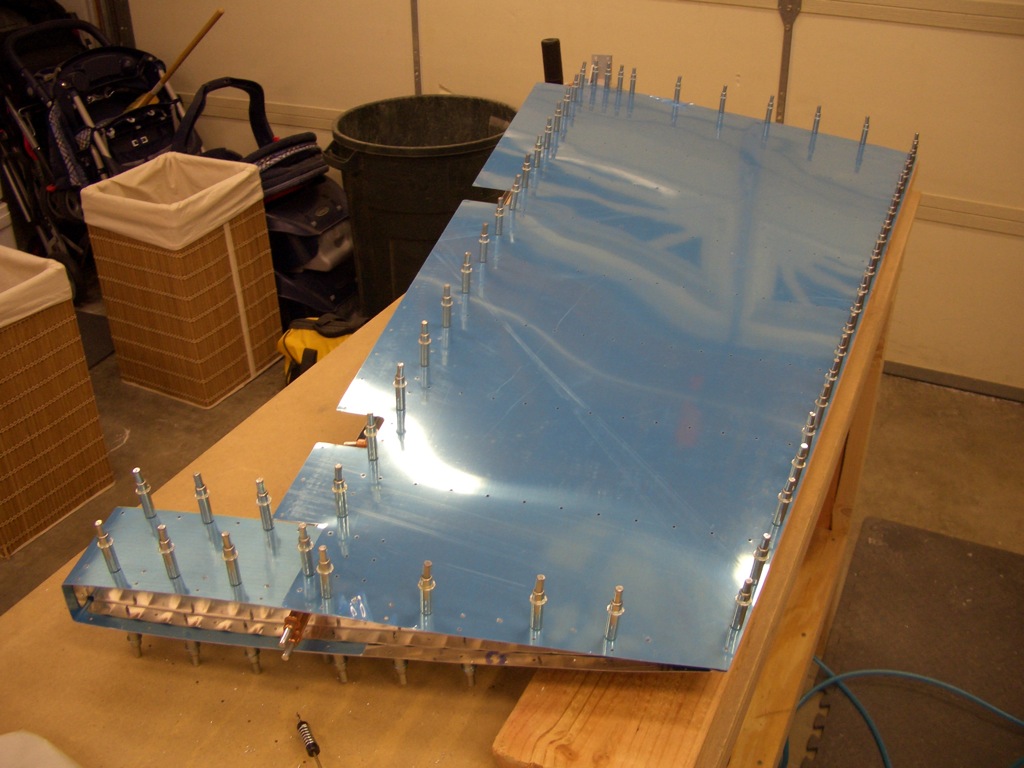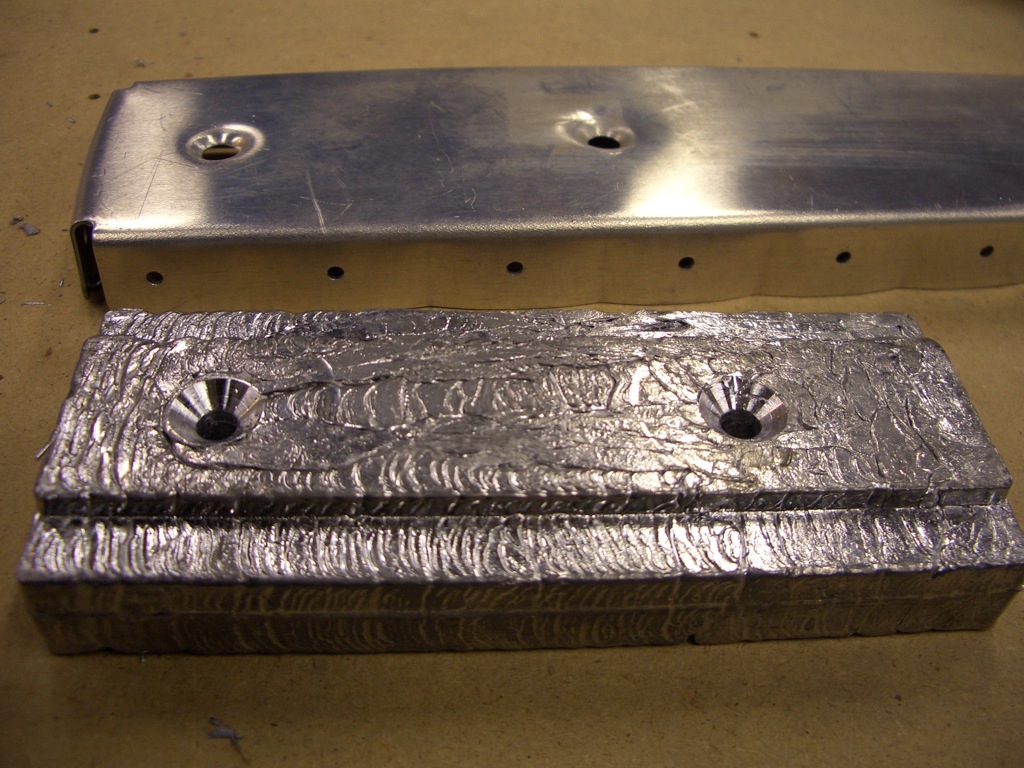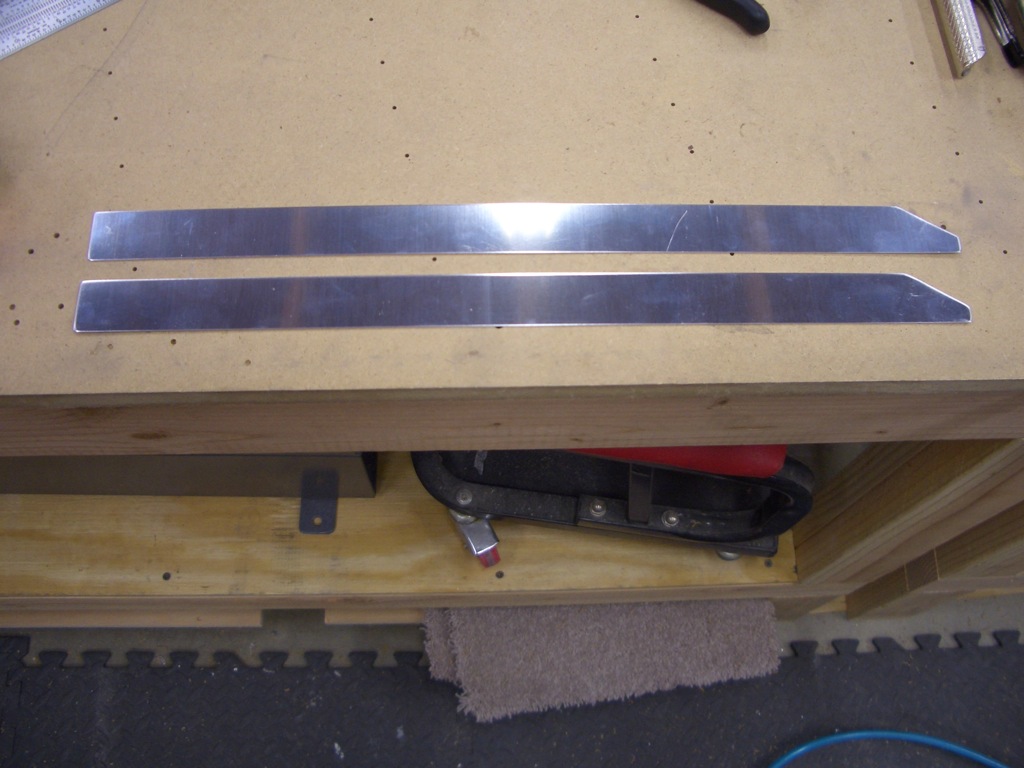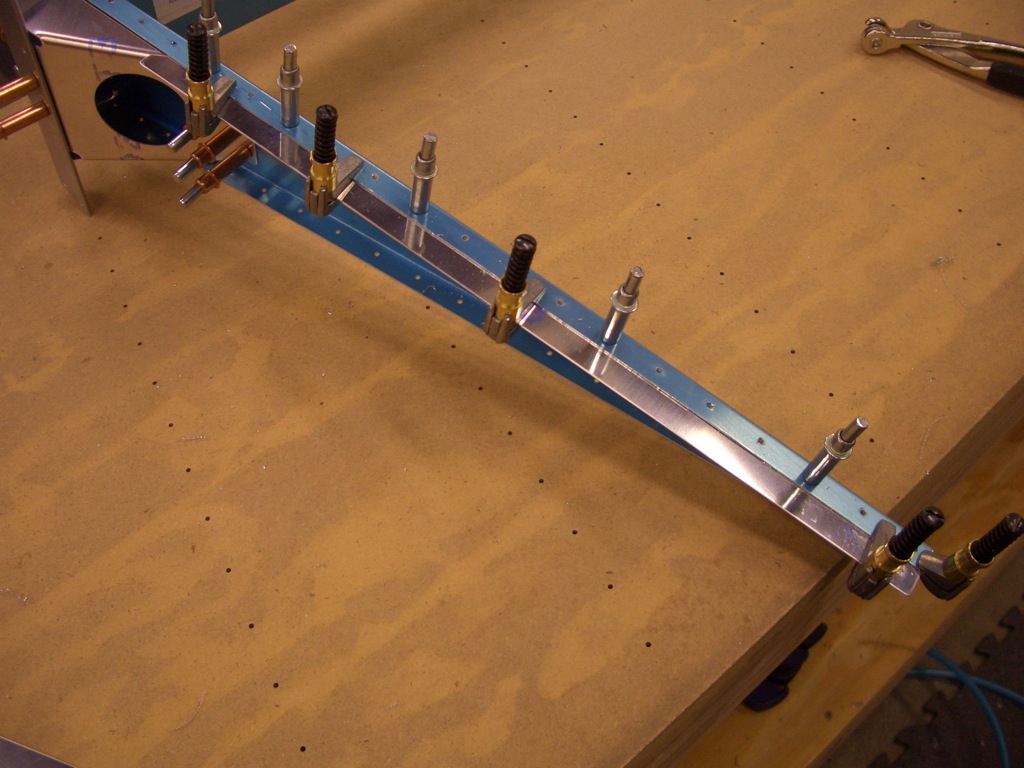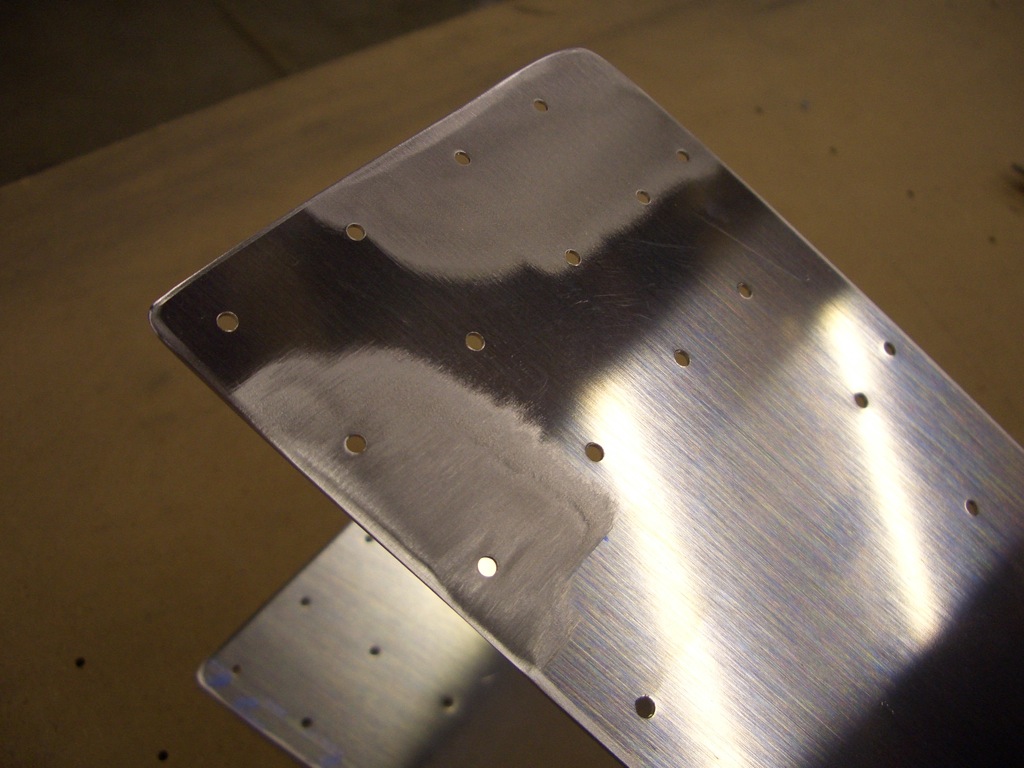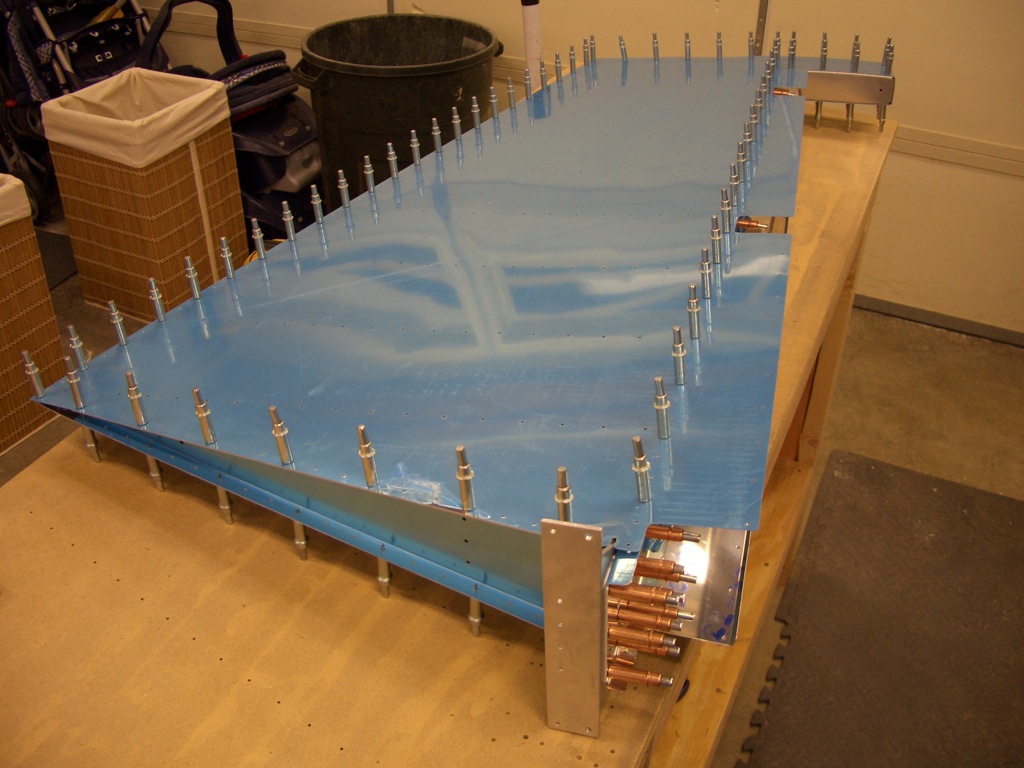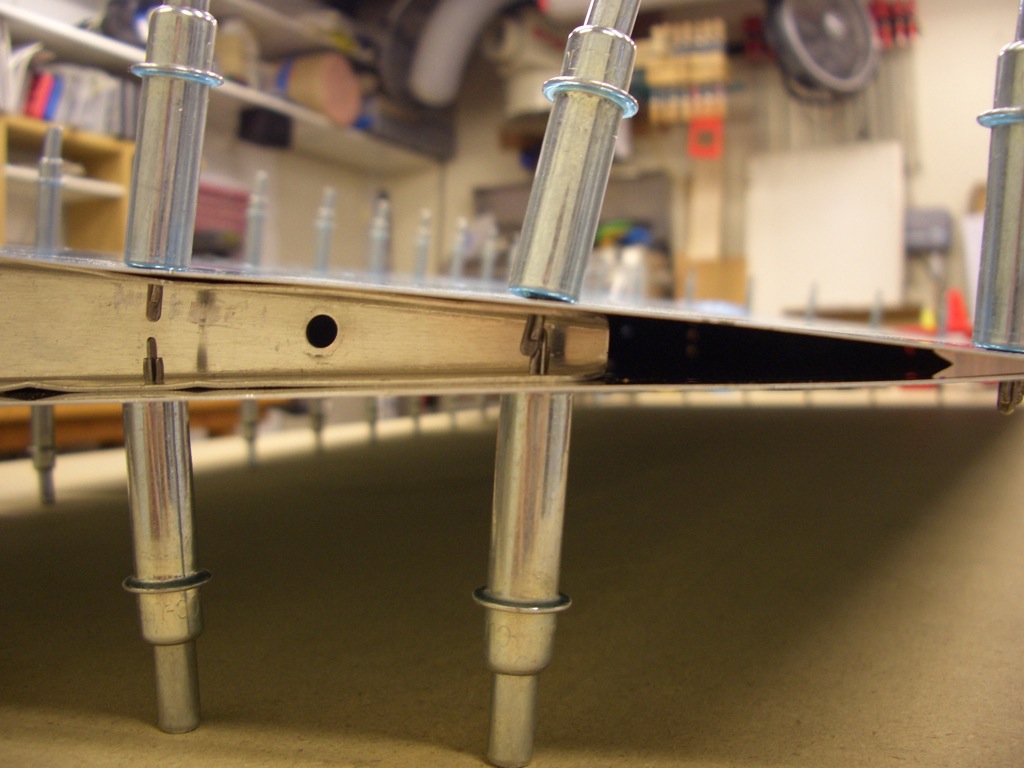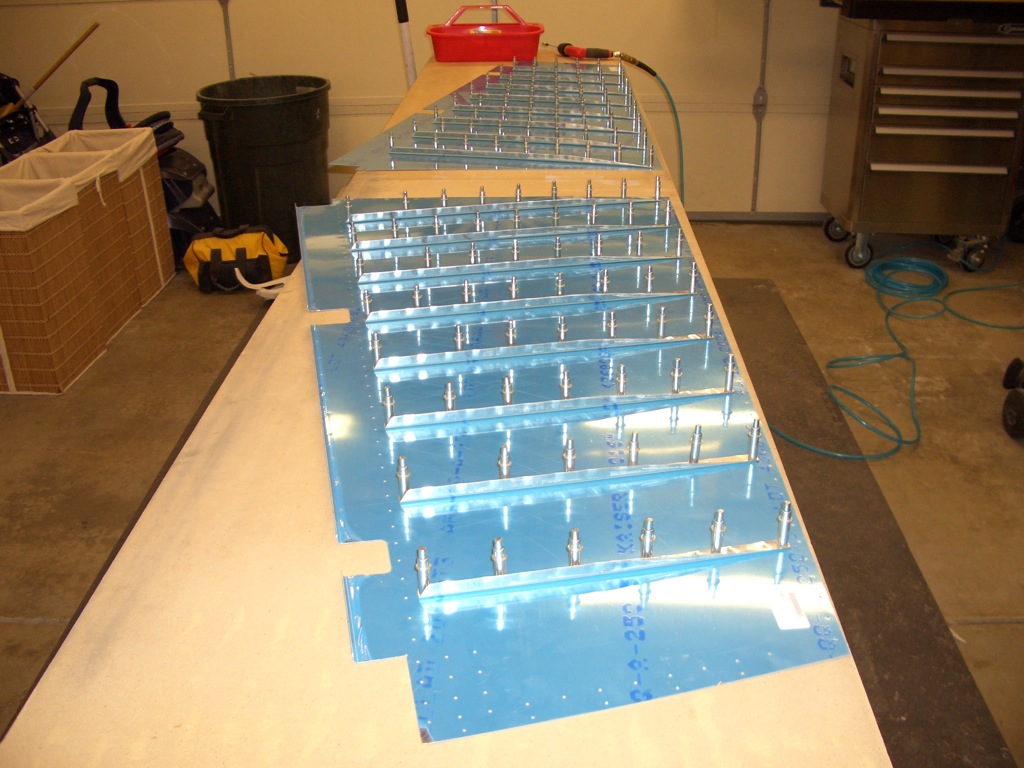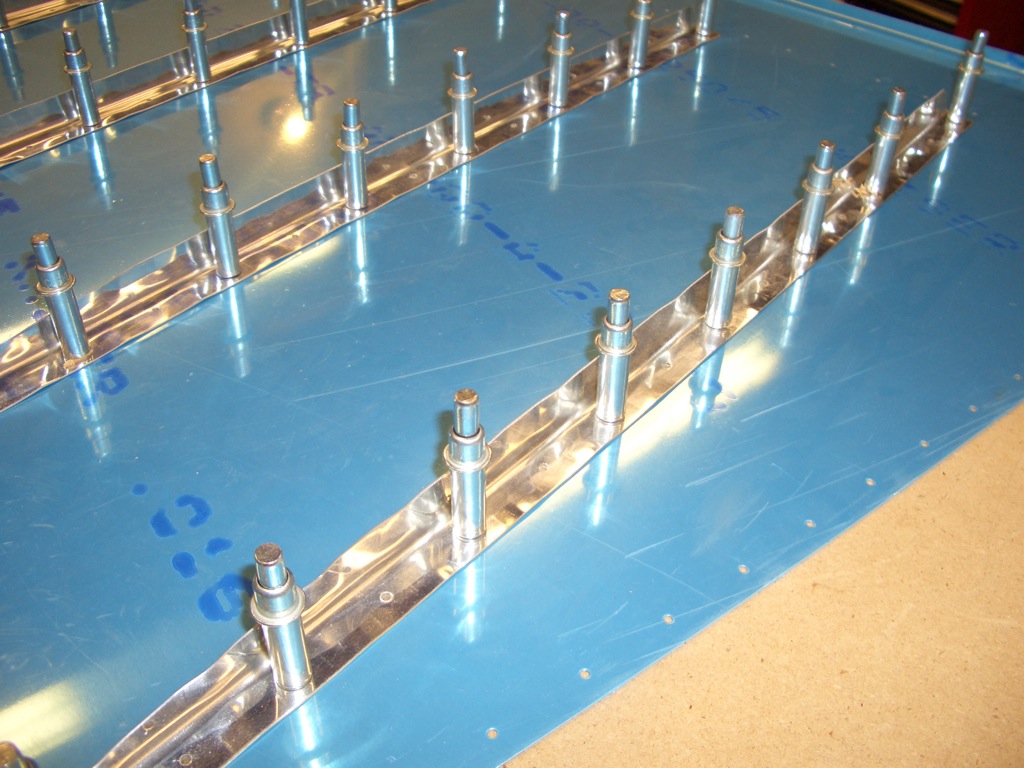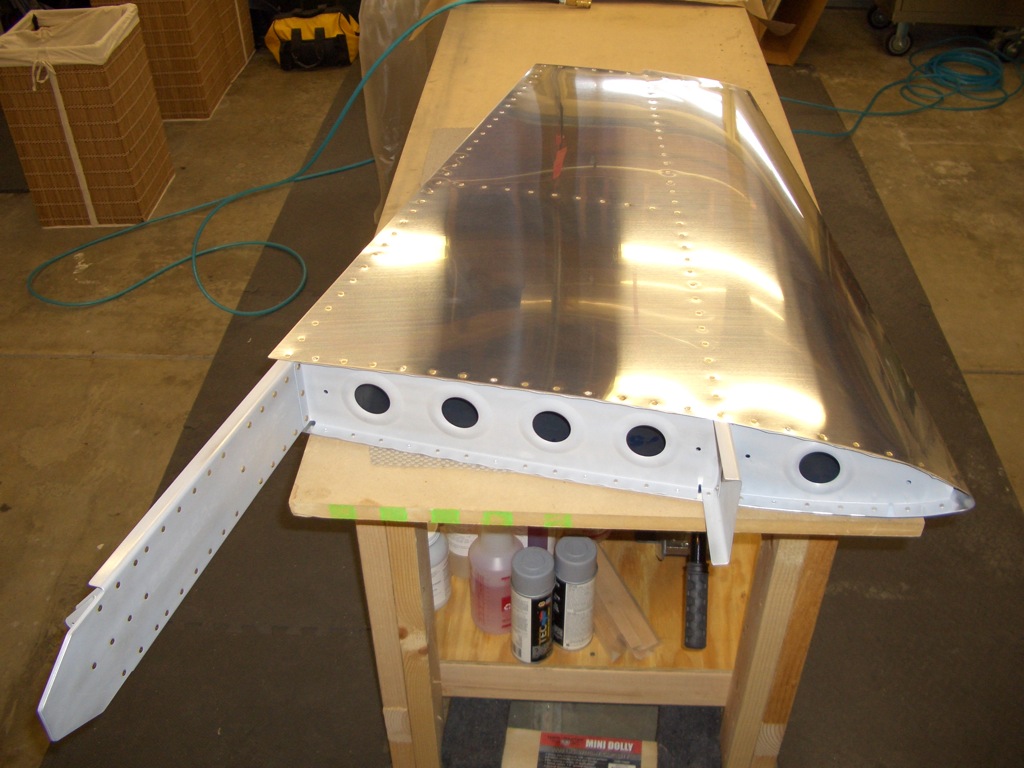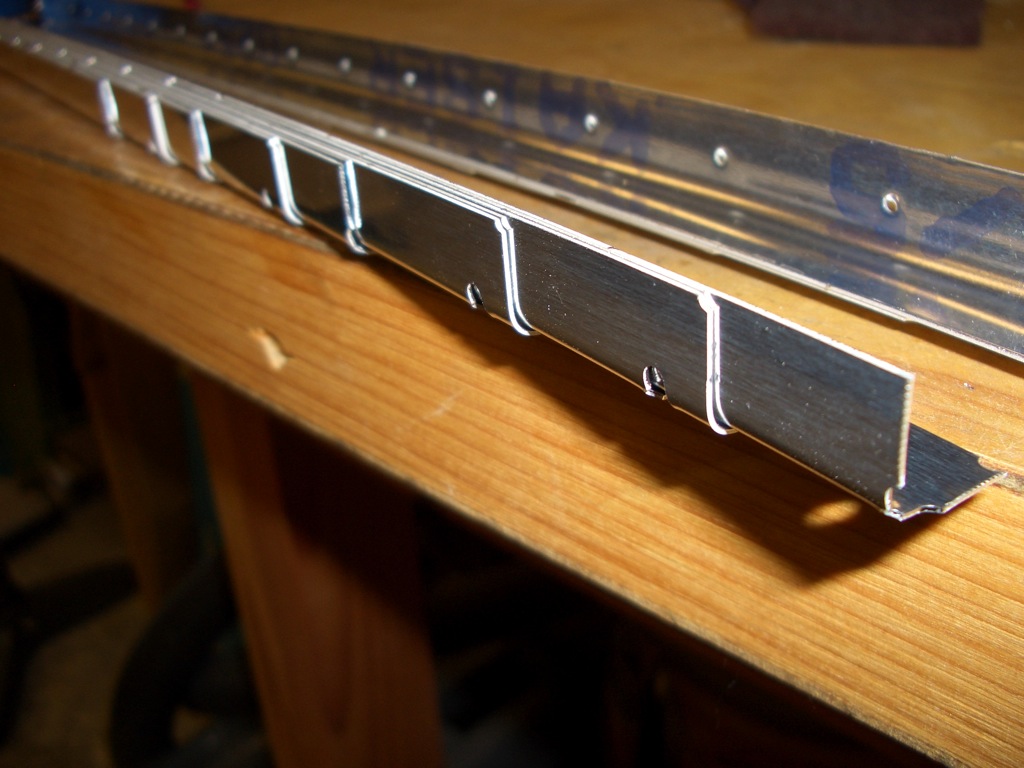I deburred and dimpled the other rudder skin tonight. I highly recommend the DRDT-2 dimpler. Not only is it quiet and very low impact, there’s basically no chance of damaging the skin. I can’t tell you how many builder’s websites I’ve run across where they accidentally put an extra hole in their skin while dimpling using the standard c-frame dimpling tool. Unless you’re completely not paying attention, I simply can’t see how that could happen with this tool. If you lower the handle gently into the hole and only press firmly after the dies are engaged, you’ll never make a mistake.

The aft three holes at the top on each skin need to be drilled to #30 and dimpled for the rudder top fairing. The rudder is very narrow here, so there would basically be no access to dimple these after the rudder is assembled.


